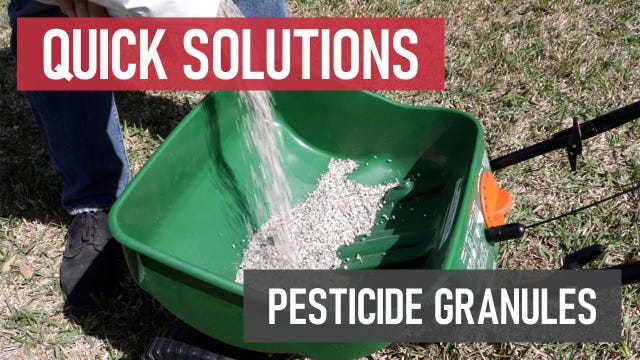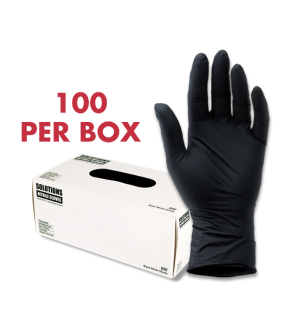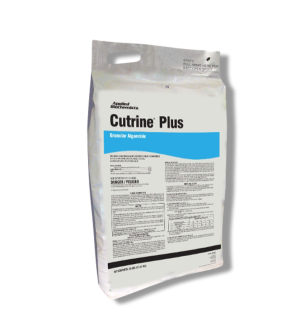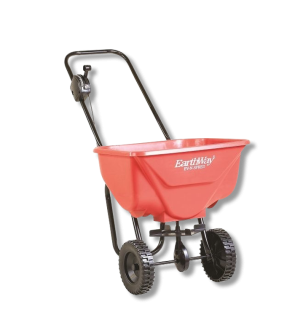Gain access to personalized product screening, the best pricing, rewards, and more!
Most Effective Products
How to Apply Pesticide Granules
Are you facing an infestation of pests in your lawn, garden, or yard? To control and prevent their populations, granule pesticides may be required.
Generally, pesticide granules are used outdoors, but it can be easy to misunderstand the general use of this product. To avoid any costly damages from misapplication, look at our DIY guide for professional tips and information.
Choose Your Product and Tool
The use of pesticide granules will depend on the pesticide label, but some examples are explained below:
- Tape measurer or measuring wheel
- Rotary or drop spreader
- Push spreader
- Broadcast spreader
- Handheld spreader
- Scale, if weighing is needed
- Selected granular pesticide
- Personal Protective Equipment (PPE), such as gloves
How to Use
We suggest using the Valar Plus Bifenthrin Granules to control insects with a granular insecticide. This bifenthrin-based granular insecticide is labeled to control various lawn and landscape pests within several days and up to three months after application.
For weed control, the Solutions 15-5-10 Weed & Feed Fertilizer with Trimec is an effective weed and fertilizer combination product. It will help promote growth in warm-seasoned residential lawns while also killing post-emergent weeds.
For unwanted aquatic growth control, we recommend using the Cutrine Plus Granular Algaecide. This granular herbicide will control listed algae in lakes, ponds, and other water bodies.
Step 1: Check the Label

Check your pesticide label and your spreader's manual to determine the settings to use and the application rate to follow.
Step 2: Measure the Treatment Area
 Determine how much pesticide granules to use by measuring the size of the treatment area. Find the square footage by measuring the treatment area's length and width, then multiply them together (length X width = square footage).
Determine how much pesticide granules to use by measuring the size of the treatment area. Find the square footage by measuring the treatment area's length and width, then multiply them together (length X width = square footage).
Step 3: Calibrate the Proper Settings

Take a look at our guide on calibrating your spreader if you are unsure what setting to use due to the size of the treatment area and the spreader model not being mentioned on the pesticide label.
Step 4: Load the Spreader
After properly calibrating your spreader and measuring the size of the treatment area, load the spreader with the proper amount of pesticide granules.
Step 5: Apply the Granules
Some pesticide granules may require you to mow a day before application, while others may tell you to delay. Be sure to read the label to see if any restrictions exist.
Apply the product evenly and steadily as directed on the label instructions.
To make even applications on a dry-land site such as a lawn, we suggest starting at the edge. Then, walk steadily around the yard's perimeter. Next, walk back and forth across the middle of the lawn to cover the space missed in the middle.
Be sure not to overlap applications unless it is instructed to do so on the pesticide label instructions.
Where to Use
Pesticide granules can be used in various application sites, including, but not limited to:
- Lawns/turfgrass
- Mulch
- Ground covers
- Around homes or other structures
- Aquatic sites
- Ornamentals
- Crops
What To Do After Application
Follow the REI
Check the label to see how long it takes to keep people and pets out of the treated area after application. The REI (restricted entry interval) will determine this.
If no REI is stated and you are unsure, it is best to keep people and pets out of the treated area until it has dried completely.
Adjust Mowing
Any remaining granules on the treated area should be avoided if mowing is needed after application.
Disturbing the granules may decrease pest control efforts.
If Needed, Water the Granules
Depending on the pesticide granules, they may need water a day or more after application to activate the chemicals.
Clean Up Spills
If you spill or push any granules out of the treated area, sweep them back into the site or remove them.
What to Expect
Increased Pest Activity
Do not worry if you see an increase in pest activity after applying the pesticide granules.
You probably see pests after a treatment because they are trying to escape the treated area.
Common pests controlled with pesticide granules are ants, cockroaches, grubs, beetles, fleas, spiders, scorpions, ticks, caterpillars, weeds, diseases and fungi, leaf-feeding pests, mosquito larvae, algae, aquatic insects, and aquatic weeds.
Watering
Many granule herbicides require watering a day or at least a few weeks after application to release the active ingredients.
Patience
It will take some time and maybe consistent reapplications to control a pest infestation fully.
Key Takeaways
Do You Water Pesticide Granules?
- Watering may be required before or after a pesticide granule application.
Does Rain Wash Away Pesticide Granules
- Rain does not usually wash pesticide granules, but it can if it is consistent or heavy enough.
How Long Does it Take to Effect Pesticide Granules?
- The time for a pesticide granule to work will depend on several factors, such as the active ingredients, formulation, and other environmental conditions.














